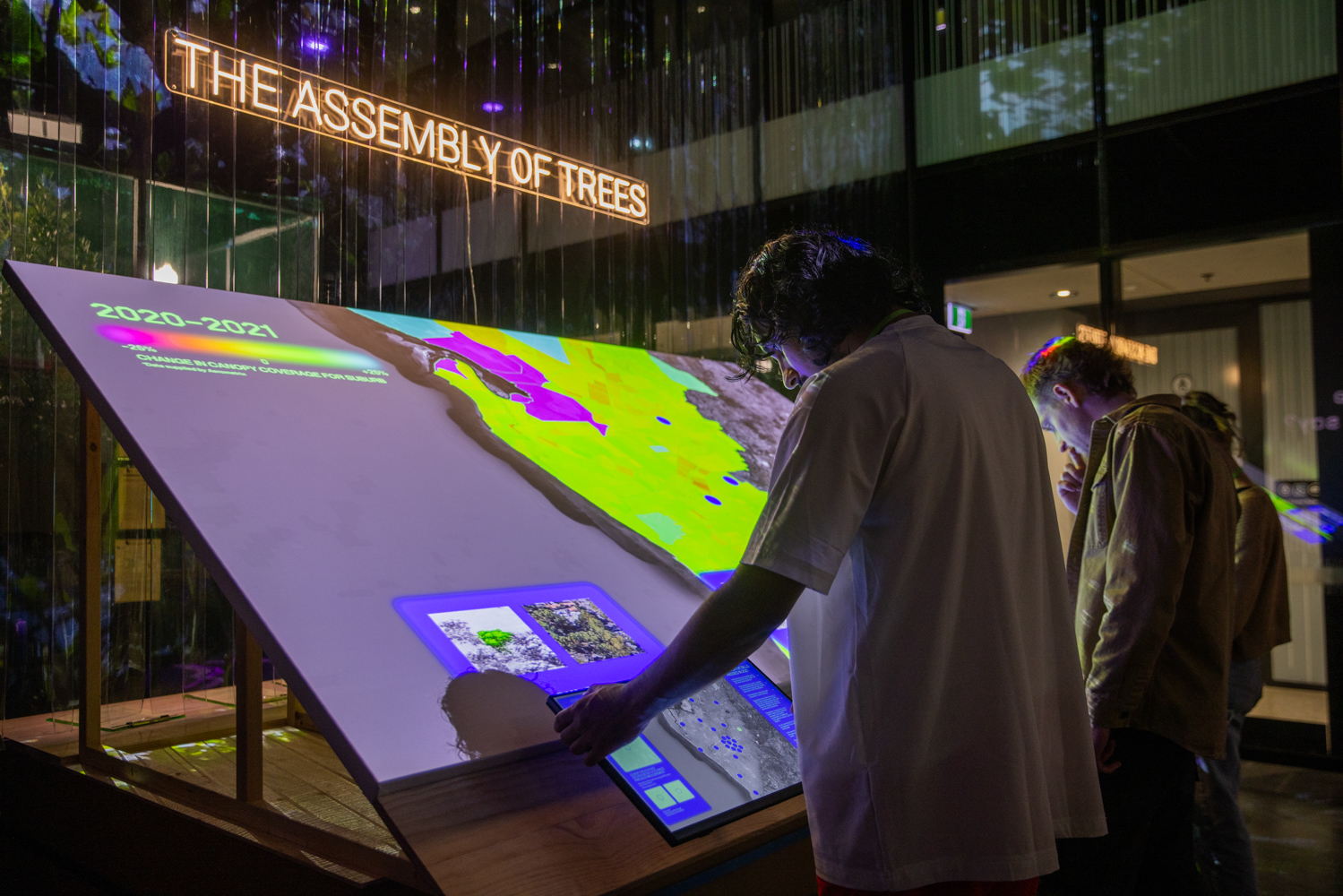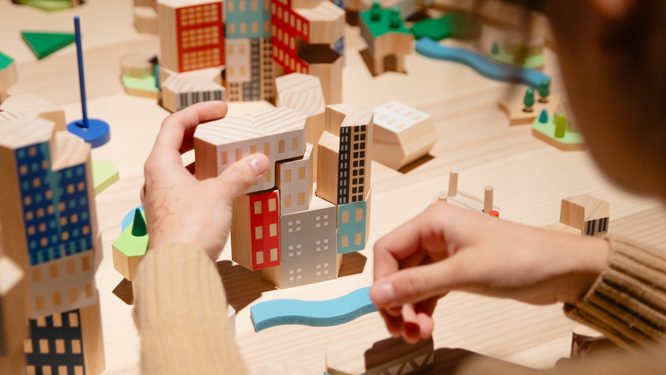Interested in impacting the future of the environment?
Make it a career with UniSA

Exhibit Details
Open JanNov 2024
- What if we all had a say?
- Delve Deeper
- The Assembly of Trees
We sometimes forget that it’s not all about us.
Humans make up a fraction of life on Earth yet our decisions impact everything.
What would have to change to radically improve the way we make decisions? Could we give personhood to non-human animals? What about giving trees a vote?
In this gallery, we look at how we might listen to the perspectives of trees on our democratic decision making. While plants may not have voices, changes in tree canopy coverage can indicate a tree’s level of wellbeing.
Come in and meet The Assembly of Trees, 23 representatives of plants across greater Adelaide. Browse through bills and consider how they might be responding to changes we make. Do they approve?
Humans make up 0.01% of the present-day biomass of life on Earth. And all life that currently exists now is only 1% of all life that has ever existed on Earth. This perspective can help to inform the way humans think about the future and make decisions.
Policy decisions, no matter how distantly related they may seem to ecology, can have potential effects on our environment. If the capacity to actively participate in democracy was extended to non-human animals and even plants, then a development bill, for example, could consider plants as the primary stewards of the lands being regulated.
There are many groups that already advocate on behalf of disenfranchised communities, like children, immigrants and people who are incarcerated. Once plants become personified, it’s much easier to view them as a political entity. For example, Ecuador’s highest court ruled that a rights-of-nature provision in the country’s constitution forbade plans to mine for copper and gold in a protected forest. In the U.S., a set of lakes, streams and a marsh in Florida were granted legal rights in a landslide county vote and are the first natural nonhuman entities to defend themselves in U.S. courts.
While plants may not have voices, there are other ways they can indicate their levels of wellbeing. Many changes or fluctuations, even if they are temporary, can have a negative impact on, and stress, plants. Stress can have serious repercussions on various phases of a plant’s growth and, ultimately, crop productivity. The effect of stress can influence the physiology of plants, change regulatory networks, and alter gene expression. One indicator of plant stress is tree canopy cover because trees devote less energy to growing leaves when stress increases.
Read
- The philosopher Jonathon Keats wants to incorporate the world’s plants and animals into our democratic systems
- Aerometrex using LIDAR to monitor tree canopy coverage in Adelaide
- Tree growth as indicator of tree vitality and of tree reaction to environmental stress: a review
- Urban Heat and Tree Mapping of Adelaide
- Wilding radio – tune in to the sounds of nature recovery
- Call for tree change on canopy protection
- Increasing SA’s tree canopies
- Sit down with
- A New Ecology for Democracy: How to Enfranchise Non-Human Species, and Why We Should
- The Maori Vision of Antarctica’s Future – The New York Times
- Plans to mine Ecuador forest violate rights of nature, court rules
Accessibility
Credits
- Jonathon Keats Artist
- Featherweight Design/Build
- Aerometrex Data and Imagery
- Jimy McGilchrist Build











